Professional Top Rated Hardscaping Company
at an affordable price

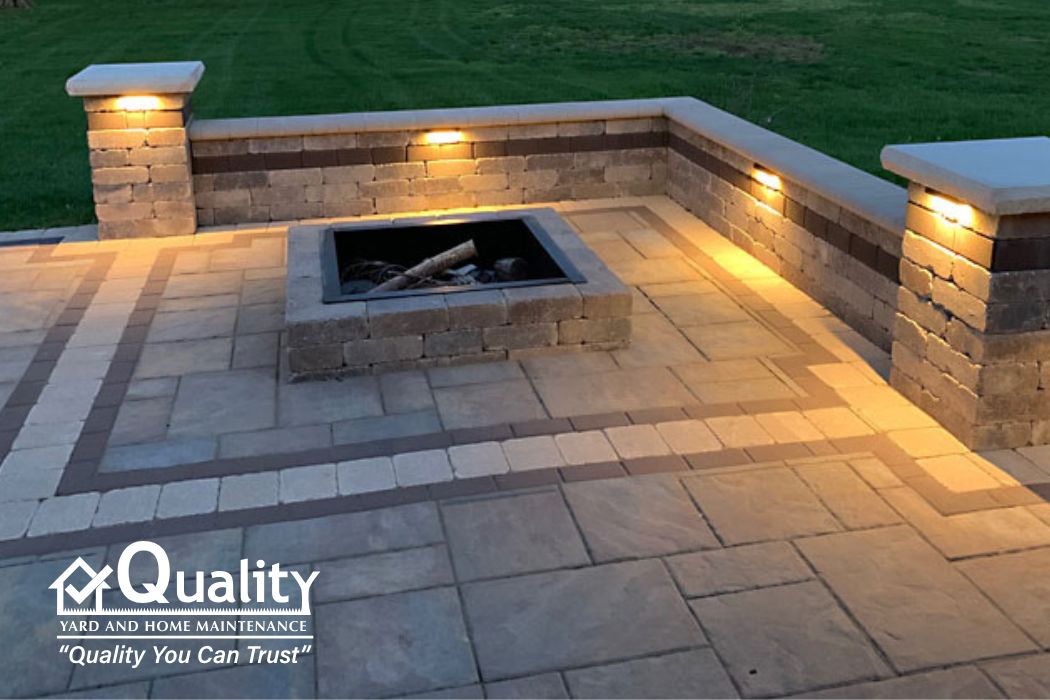
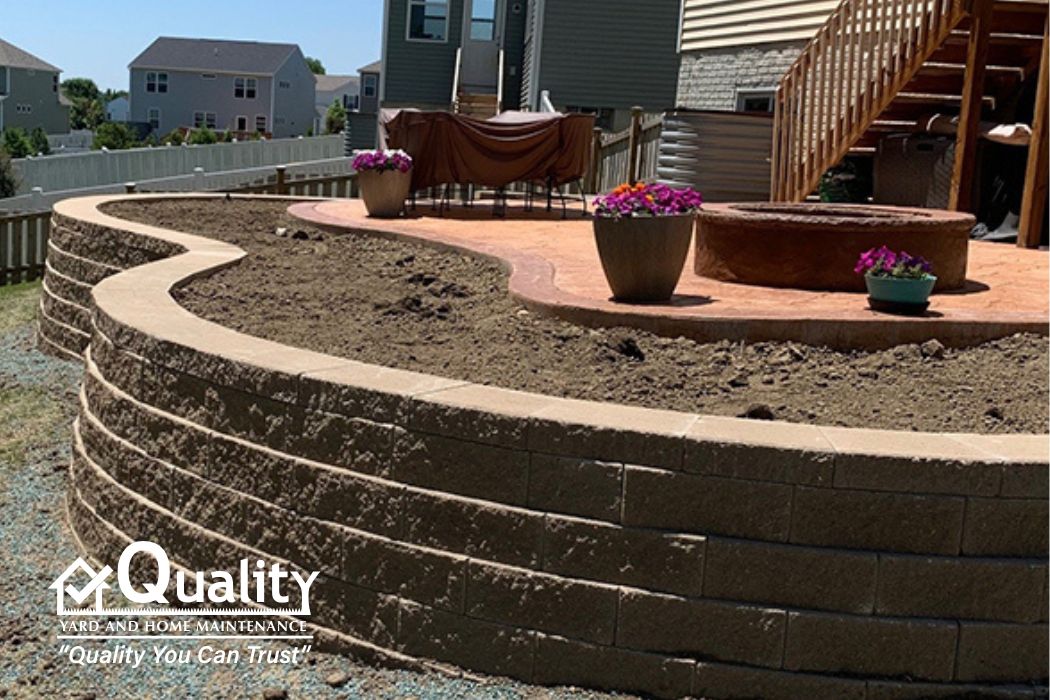
Beyond The Simple Act Of Functionality
Ever caught yourself staring at a neighbor’s meticulously designed backyard, wondering how you can transform your own outdoor space into a similar haven? Well, you might be overlooking a crucial ingredient in the landscape mix: hardscaping. Beyond just aesthetics, hardscaping offers a blend of functionality and style that elevates your outdoor living area. Let’s embark on a journey to uncover the wonders of hardscaping and how it can redefine your home’s outdoor appeal.
Why fuss over hardscaping? It’s simple. Hardscaping introduces a level of organization and usability to your garden that softscaping alone can’t achieve. It tackles soil erosion, improves water drainage, and carves out cozy nooks for relaxation and social gatherings. In essence, hardscaping is the unsung hero of landscaping, offering both form and function to your outdoor domain.
Quality Matters when it comes to Hardscaping!
We are happy to customize a program for your hardscaping and landscape needs. It all starts with requesting a quote by calling our friendly team at (614) 559-0078 or request a quote online.
Choosing the Right Hardscaping Company
It’s About what you want
Our highly-rated hardscaping offerings includes the following services, all designed to address both the aesthetic and funcational aspects of your property, ensuring it is both beautiful and sustainable:
- Design Consultation for hardscape layout and material selection
- Patios and Walkways using various materials (e.g., pavers, stone, concrete)
- Retaining Walls to manage slope and erosion
- Garden Walls
- Edging Stones
- Outdoor Kitchens, Firepits and Fireplaces
- Lighting installation to enhance outdoor spaces at night
- Pergolas, gazebos, and other garden structures
- Driveway construction and renovation
- Deck Building and installation
Popular Hardscaping Materials
Selecting the right material is akin to choosing the perfect outfit—it needs to be stylish yet functional. Here’s a rundown of popular hardscaping materials:
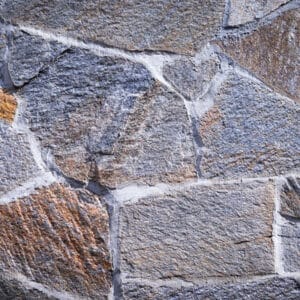
Natural Stone
Natural stone includes options like slate, granite, limestone, and sandstone. Each type offers a unique texture and color, perfect for creating elegant patios, walkways, and retaining walls. It’s durable and blends well with natural surroundings.
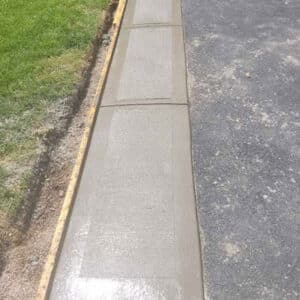
Concrete
Concrete is versatile and can be used in its traditional form or as stamped concrete, mimicking the look of natural stone, brick, or tile. It’s cost-effective and offers durability for driveways, patios, and pathways.
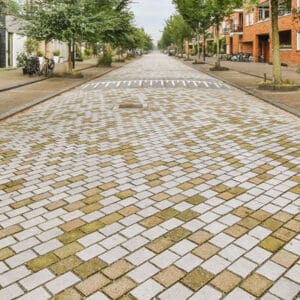
Bricks
Bricks offer a classic and timeless appeal, suitable for creating charming walkways, patios, and edging. They come in various colors and can be laid in different patterns to add visual interest.
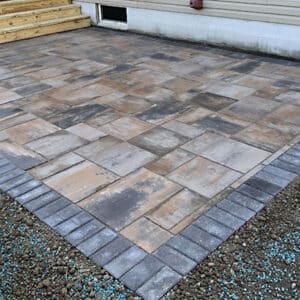
Pavers
Pavers are manufactured paving stones made from concrete or clay. They come in a variety of shapes, colors, and textures, allowing for flexible design options. Pavers are commonly used for pathways, driveways, and patios.

River Rock
River rock, sometimes called ‘gravel’, consists of small stones, varying in color and size. It’s an affordable material for creating paths, driveways, and areas requiring good drainage. It’s easy to maintain, though it may require occasional raking to keep tidy.
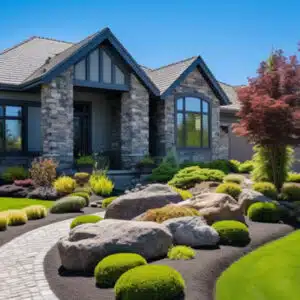
Rocks and Boulders
Rocks and boulders can add a dramatic effect to the landscape, serving as focal points or naturalistic elements within a garden. They’re ideal for creating rock gardens, edging, and enhancing the overall aesthetic appeal.
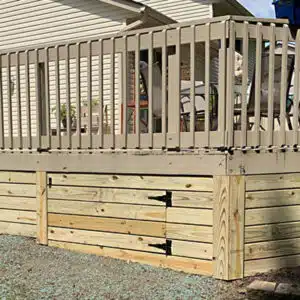
Wood
Wood is often used for decks, pergolas, and arbors, offering a warm, natural look that can be tailored to match any style. It requires regular maintenance to protect against weather and pests.
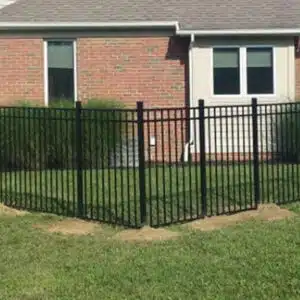
Metal
Metal, including steel and aluminum, is used for edging, railings, and decorative elements. It’s durable and provides a modern look with clean lines. Metal can also be used for retaining walls and raised garden beds.
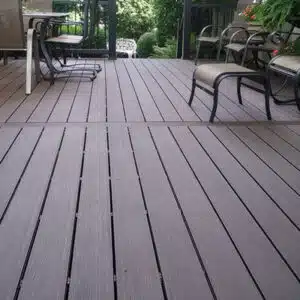
Composite Decking
Composite decking is made from a blend of wood fibers and plastics. It offers the look of wood without the high maintenance, resisting rot, warping, and pests. It’s ideal for decks and patios where a wood-like appearance is desired with minimal upkeep.
elevate your outdoor living area.
These elements can be tailored to fit the specific style and needs of your outdoor space, contributing to a cohesive and functional landscape design.
Popular Hardscaping Elements
Hardscaping encompasses a broad range of non-living elements that add structure, function, and beauty to outdoor spaces. These elements play a crucial role in landscape design, offering practical solutions while enhancing aesthetic appeal. Hardscaping can be broken down into several popular elements, each contributing its unique flair. Explore the many hardscaping elements available for your project.
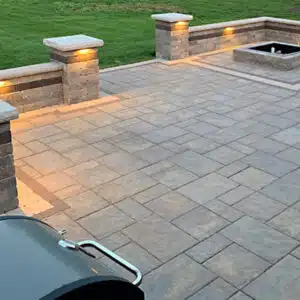
Patios
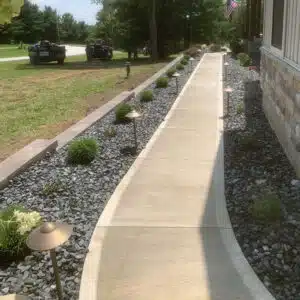
Walkways and Paths
Walkways and paths guide movement through the landscape, connecting different areas of your outdoor space. They can be designed to create a flow between spaces such as gardens, patios, and entryways, using materials like gravel, bricks, or stepping stones to add charm and character.
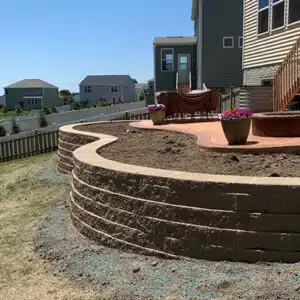
Retaining Walls
Retaining walls are structures designed to restrain soil to unnatural slopes. They are used to prevent erosion, create usable flat areas on sloped land, and can be constructed from concrete blocks, natural stones, or treated timbers. Besides their functional role, retaining walls can also be a decorative element in the landscape.
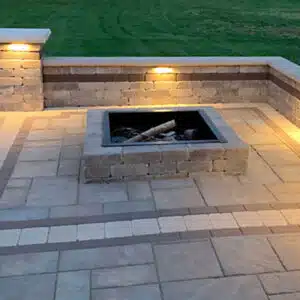
Fire Pits & Fireplaces
Fire pits and outdoor fireplaces create a warm and inviting outdoor area where people can gather, entertain, and relax. They can be built using bricks, stones, or concrete and are designed to safely contain a fire, providing light and warmth during the cooler evenings.
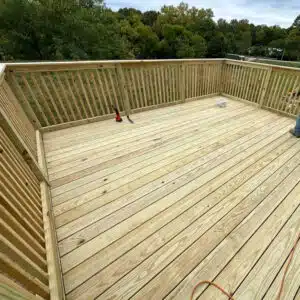
Decks
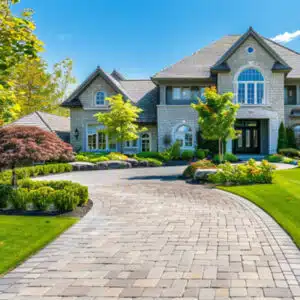
Driveways
Driveways are an essential part of the landscape, providing access to the home from the street. They can be made from concrete, asphalt, pavers, or gravel, and designed to complement the home’s exterior and the overall landscape design.
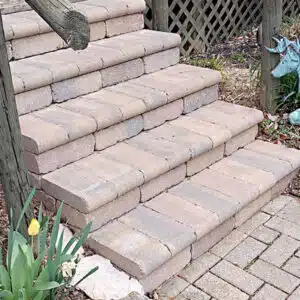
Steps and Stairways
Steps and stairways facilitate movement between different levels in the landscape, such as from a patio to a garden. They can be made from materials that match or complement other hardscaping elements, ensuring safety while adding to the overall aesthetics of the outdoor space.
Choose a Reputable Hardscaping Company today
We will prove our reputation and reliable quality service to you.
Give us 1% of your trust and we’ll earn the other 99%
The Role Hardscaping Plays in Your Home Project
Each of these elements plays a crucial role in hardscaping, enhancing both the functionality and beauty of outdoor spaces. By carefully selecting and designing these features, you can create a cohesive and inviting landscape that meets your needs and reflects your personal style.
These elements can be tailored to fit the specific style and needs of your outdoor space, contributing to a cohesive and functional landscape design.
Planning Your Hardscaping Project
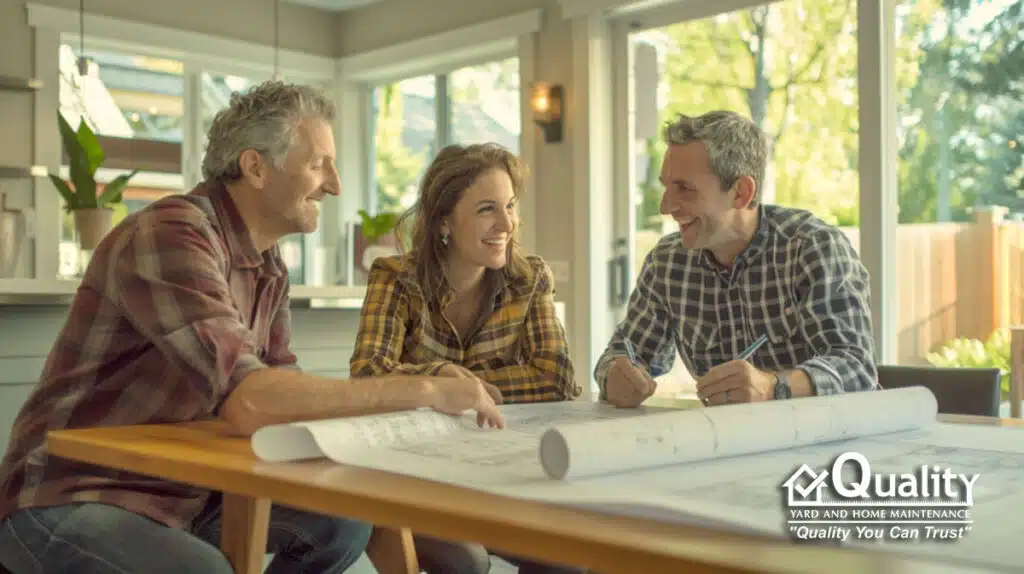
Embarking on a hardscaping project without a plan is like navigating a ship without a compass (or a rudder). Consider the overall design, how each element interacts with your home’s architecture and landscaping, and the choice of materials. A well-thought-out plan ensures a cohesive and functional outdoor area.
Design Considerations
When planning your hardscape, it’s essential to assess your site conditions thoroughly. This includes understanding the topography, soil type, existing vegetation, and overall climate of your area. Your design style should complement the architectural style of your home and the natural landscape. It’s also crucial to envision how the space will be used, whether for entertaining, relaxing, or as a play area for children. This foresight will guide the functionality of your hardscape design, ensuring it meets your lifestyle needs while also blending seamlessly with the surrounding environment.
Choosing Materials
Selecting the right materials for your hardscape project is pivotal in achieving both durability and aesthetic appeal. Consider materials that are compatible with your design style and local climate conditions. Maintenance requirements are a significant factor; opting for materials that require minimal upkeep can ensure your hardscape remains beautiful and functional with less effort. Sustainability is another critical consideration, with many homeowners choosing eco-friendly options that reduce environmental impact. Compare your options carefully, taking into account factors such as cost, longevity, and the overall impact on your landscape’s design and functionality.
The Benefits of Hardscaping
Investing in hardscaping pays off in more ways than one. It not only boosts your property’s curb appeal but also extends your living space outdoors, offers low maintenance solutions, and can significantly increase your home’s value.
Aesthetic Appeal
Increased Property Value
Investing in hardscaping can significantly increase a property’s value. Well-designed and professionally installed hardscape features like outdoor kitchens, fire pits, and entertainment areas are highly sought after in the real estate market. These features not only enhance the visual appeal of the property but also extend the usable living space outdoors, making the property more attractive to potential buyers. The added functionality and aesthetic appeal directly contribute to the overall market value of the home.
Low Maintenance
One of the key benefits of hardscaping is its low maintenance nature. Unlike softscaping, which requires regular watering, pruning, and care, hardscape elements typically require minimal upkeep. Materials such as pavers, concrete, and stone can withstand various weather conditions without the need for constant maintenance. This makes hardscaping an ideal choice for homeowners looking for beautiful outdoor spaces without the high maintenance requirements of traditional landscaping. The time and cost savings in maintenance make hardscaping a practical and appealing option for many property owners.
DIY vs. Hiring a Professional
While the DIY route can be tempting, some hardscaping projects demand professional expertise. Understanding when to hire a pro can save you from costly mistakes and ensure a polished result that stands the test of time.
When to Do It Yourself
When to Hire a Professional
Hiring a professional is advisable when the project requires specialized skills, permits, or could potentially impact the safety and structural integrity of your home. Complex projects like electrical work, plumbing, structural modifications, or extensive renovations are best left to professionals. Professionals can ensure the work is completed to code, often offer warranties or guarantees on their work, and can save you from costly mistakes that exceed the initial savings of DIY. If you’re facing a project that demands expertise you don’t possess, has a high risk of error, or could significantly affect your home’s value, it’s time to hire a professional.
Common Mistakes to Avoid
Hardscaping mishaps can range from poor planning to choosing the wrong materials, to faulty installation due to a lack of skill or experience. Awareness of these pitfalls is your first line of defense, ensuring your project runs smoothly from start to finish.
